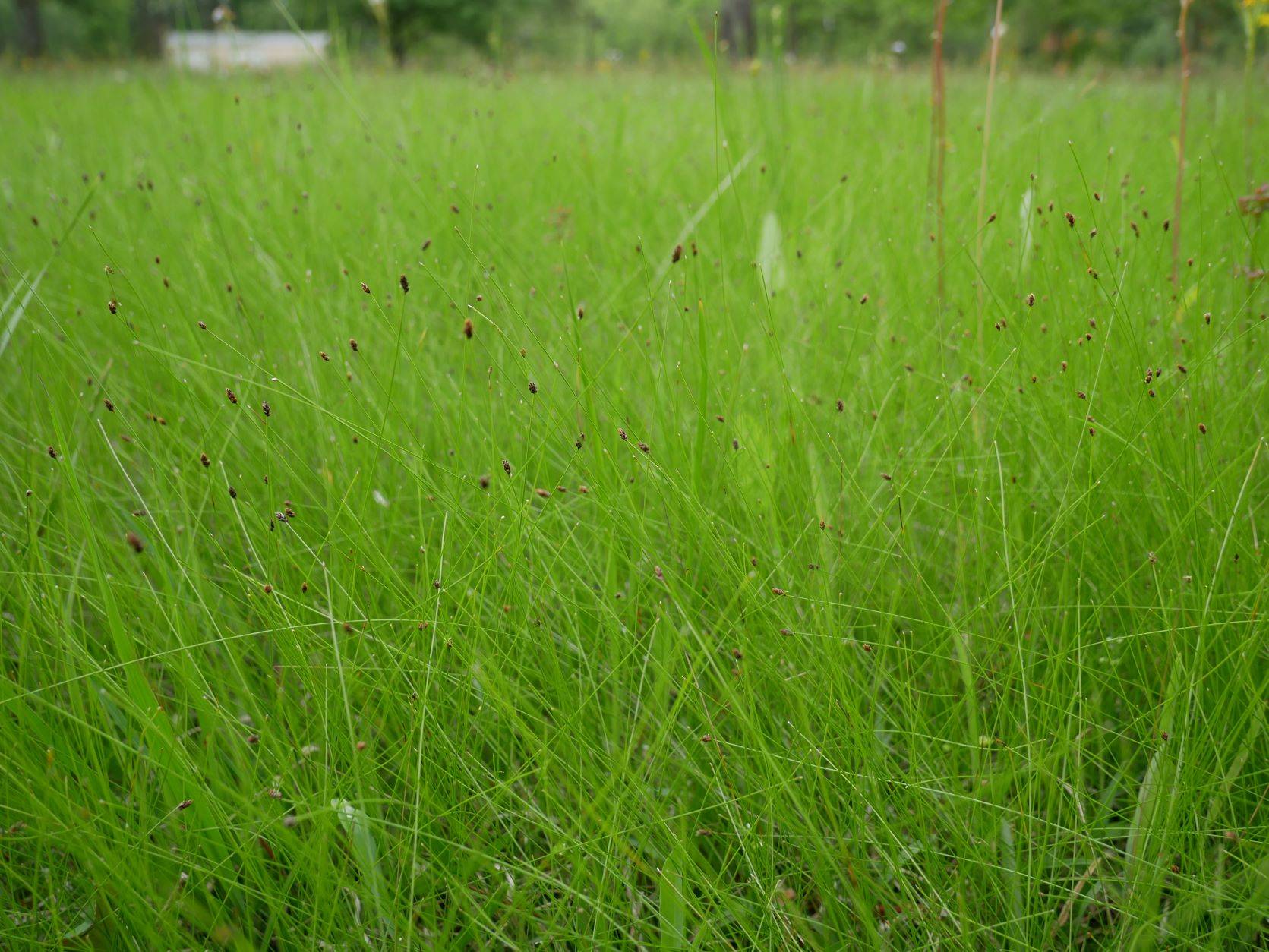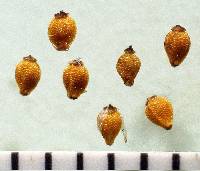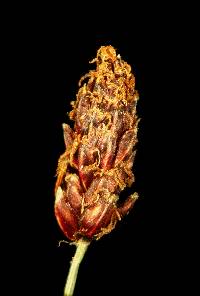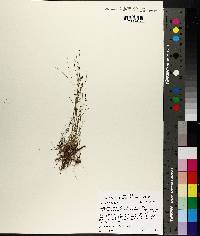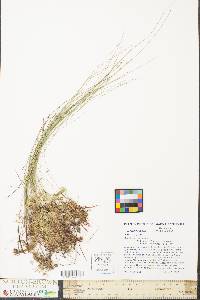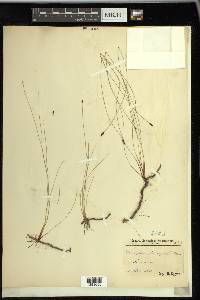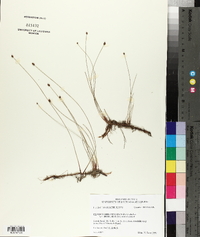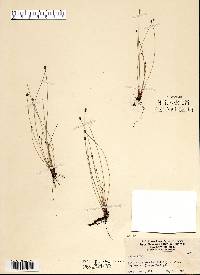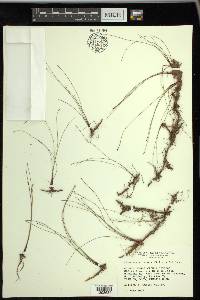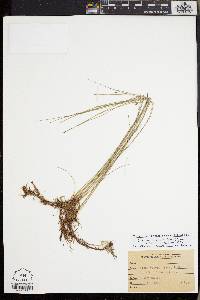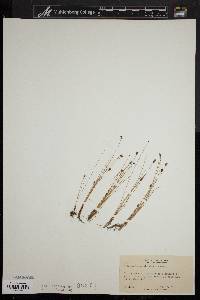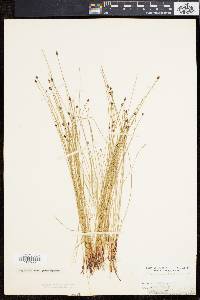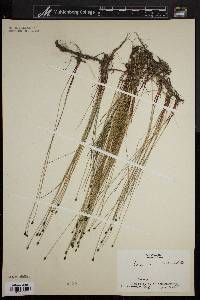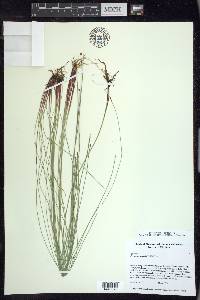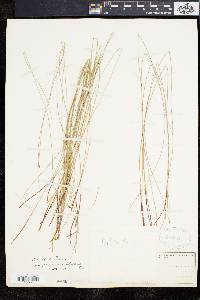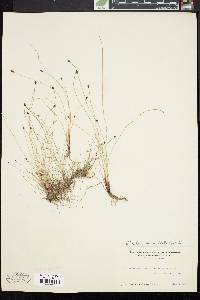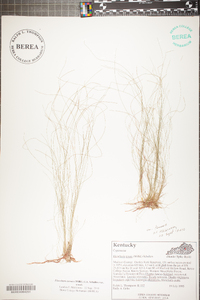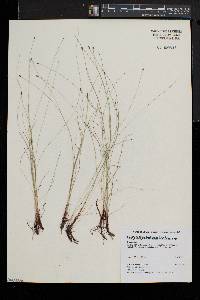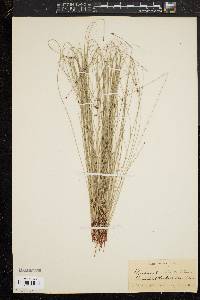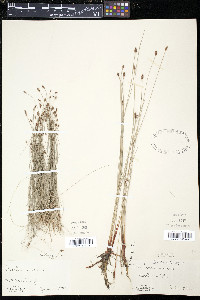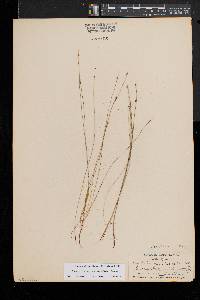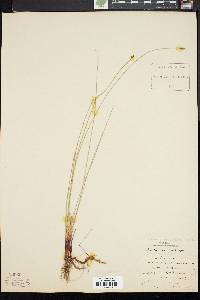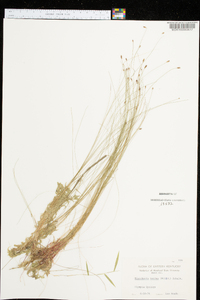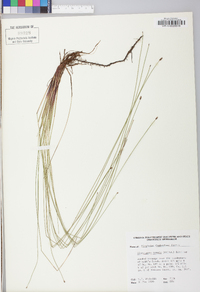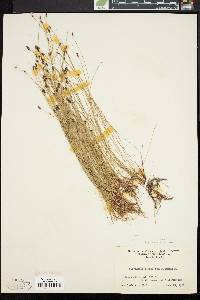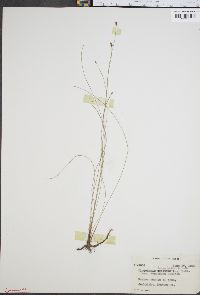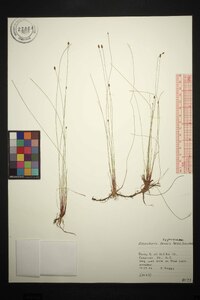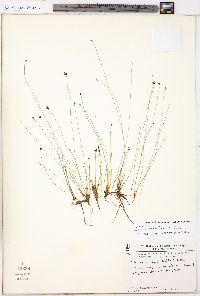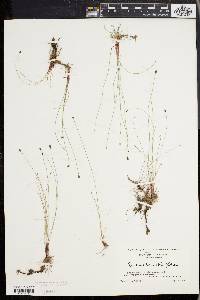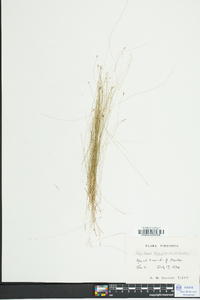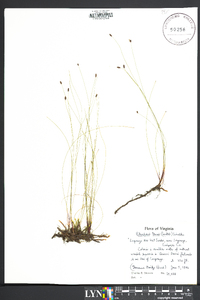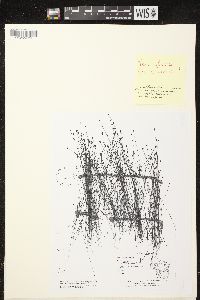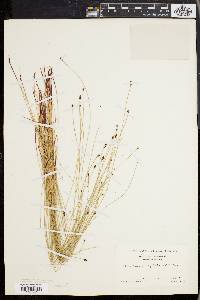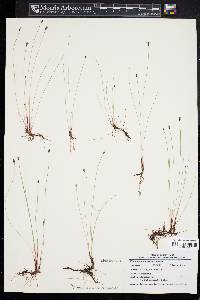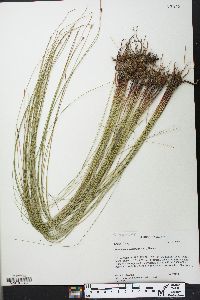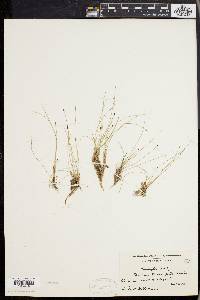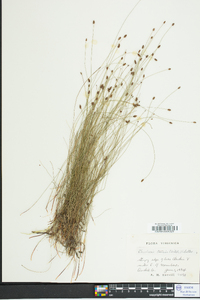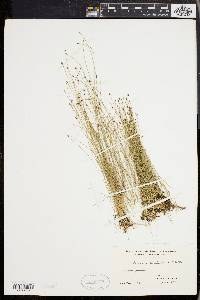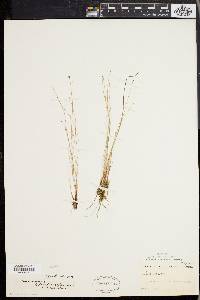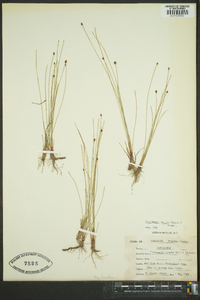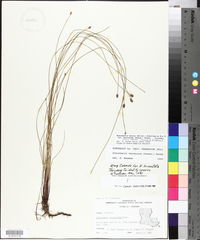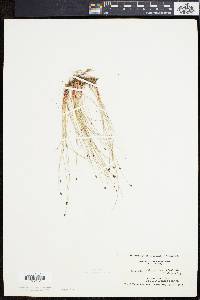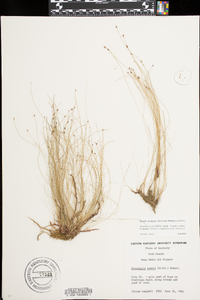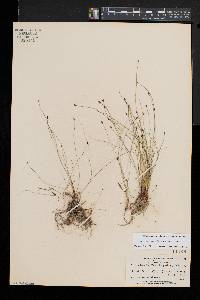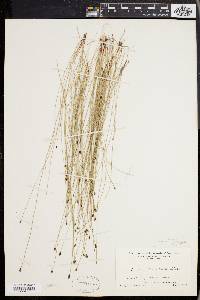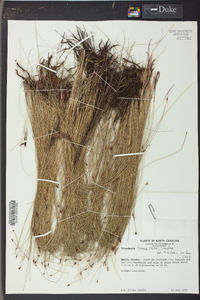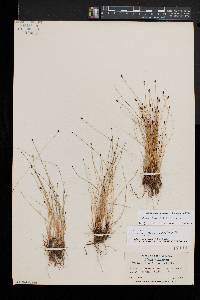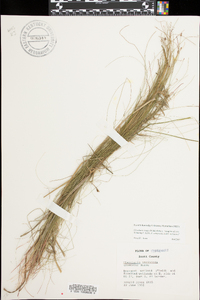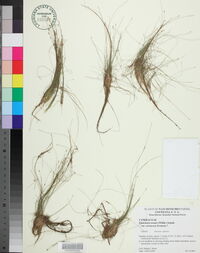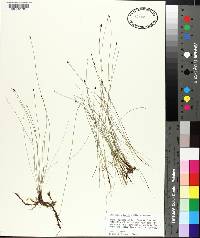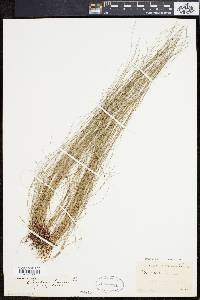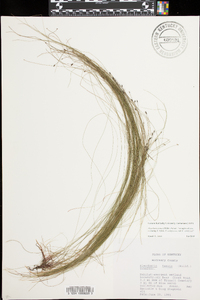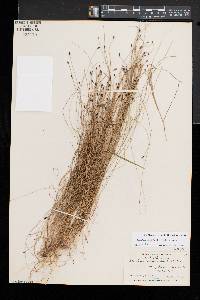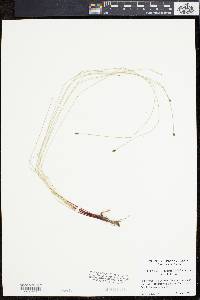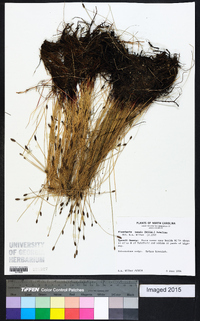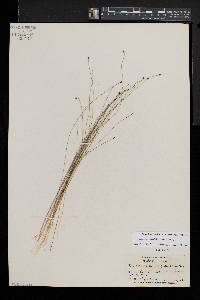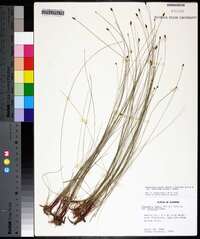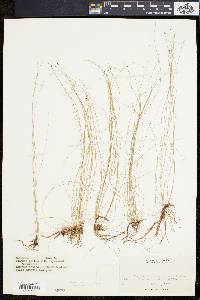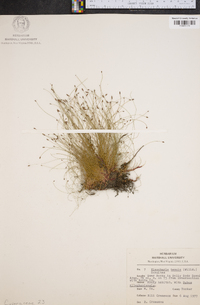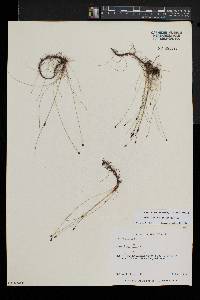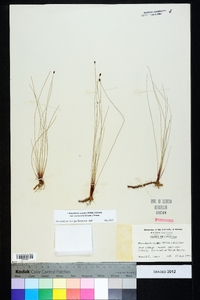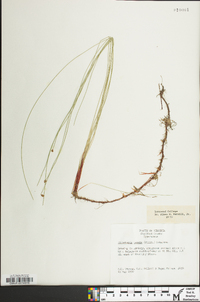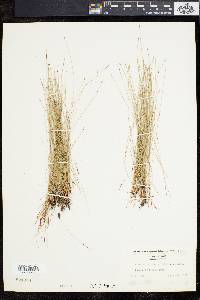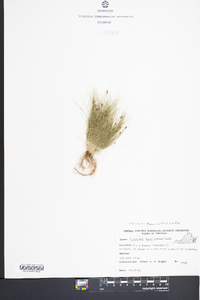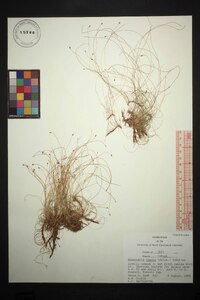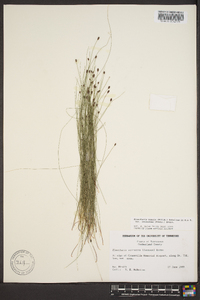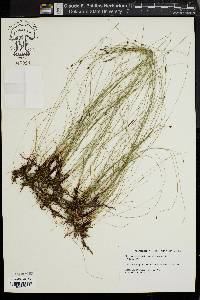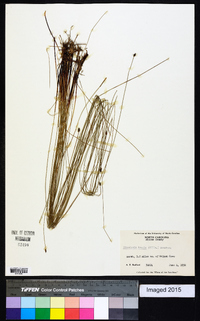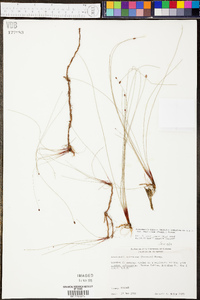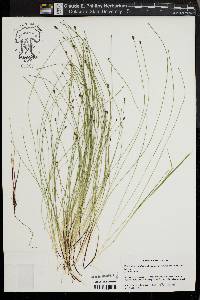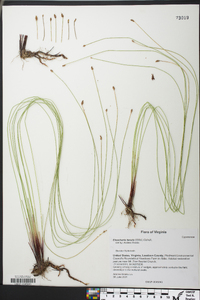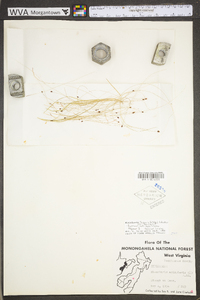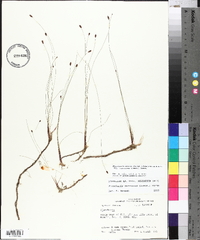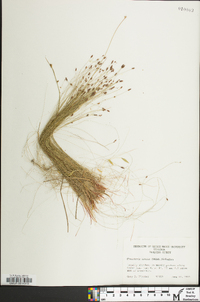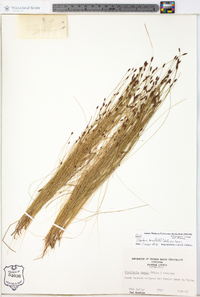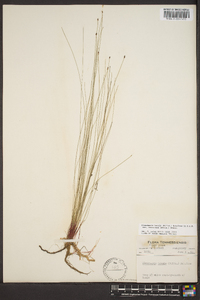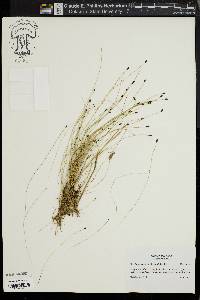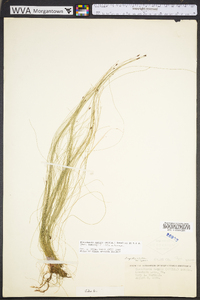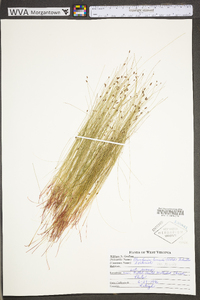
|
|
|
|
Family: Cyperaceae
Slender Spike-Rush, more...slender spikerush
[Scirpus tenuis Willd.] |
Plants perennial, mat-forming; rhizomes evident, 0.4-2 mm thick, soft to hard, cortex persistent, longer internodes 2-10 mm, scales persistent or decaying to fibers, 5-10 mm, papery, finely to coarsely fibrous. Culms terete or usually with 4 or 5(-6) angles, often sulcate; 5-90 cm × 0.2-0.5(-0.8) mm, firm to soft. Leaves: distal leaf sheaths persistent, not splitting, proximally dark red (or yellow-brown), distally green or stramineous or red, membranous, apex often reddish, obtuse to acute, often callose, often with tooth to 0.2(-0.9) mm. Spikelets ovoid, 3-6 × 1.5-2 mm, apex obtuse to acute; proximal scale amplexicaulous, apex entire; subproximal scale with flower; floral scales appressed in fruit, 20-60, 5-6 per mm of rachilla, medium to dark brown, midrib region often paler, ovate, 1.5-2.5 × 1 mm, apex rounded (to acute), entire, rarely shallowly notched, carinate in distal part of spikelet. Flowers: perianth bristles absent or sometimes 1-3, stramineous to pale brown, slender, to equaling achene, obscurely retrorsely spinulose; stamens 3; anthers brown, 0.8-1.8 mm; styles 3-fid. Achenes falling with or before scales, lemon yellow, dark yellow, medium brown, or green, obpyriform, trigonous, angles evident, sometimes prominent, 0.6-0.9 × 0.45-0.7 mm, finely to coarsely rugulose and usually alveolate (cancellate) at 10-20X, 6-10(-14) sharp horizontal ridges in each vertical series. Tubercles brown, pyramidal and to as high as wide to greatly depressed-apiculate, often rudimentary, 0.05-0.3 × 0.25-0.4 mm. The name Eleocharis capitata (Linneaus) R. Brown was long misapplied to E. tenuis (H. K. Svenson 1939). Although the extremes of the three varieties are very different, intermediates are fairly common. Some plants are intermediate with E. elliptica. Eleocharis tenuis belongs to the E. tenuis complex, which comprises species 16-21 and is restricted to North America, where it is widely distributed except for the Southeast and Southwest. Eleocharis occulta, E. bifida, and E. nitida are very distinct, have little variation, and have relatively restricted ranges; E. tenuis, E. elliptica, and E. compressa are difficult to separate, are highly variable, and have relatively large ranges (see also discussions under E. compressa and E. elliptica). Eleocharis occulta and E. bifida are evidently closely related to E. compressa; they are known only from unglaciated areas south of the limits of Pleistocene glaciation, while E. compressa has a broad range in glaciated regions. The cytotaxonomic study by L. J. Harms (1972) of E. tenuis, E. elliptica, and E. compressa included artificial interspecific and infraspecific hybrids as discussed under those species. Eleocharis tenuis var. pseudoptera might also be treated as E. elliptica var. pseudoptera following L. J. Harms (1972) because it is intermediate between E. tenuis var. tenuis and E. elliptica var. elliptica in most characters except for the 4-angled, usually deeply sulcate culms. It appears to intergrade with E. elliptica. It is placed in E. tenuis because many plants, including an isotype, are more like E. tenuis than E. elliptica; because most plants key more easily to E. tenuis; and to continue the use of the traditional name. The achenes of the holotype (from Lancaster county, Pennsylvania) and some other specimens closely resemble those of E. elliptica but are not obviously persistent after the scales fall. The usually diagnostic tooth on the distal leaf sheath in E. tenuis var. pseudoptera is also characteristic of E. elliptica var. elliptica; but in E. tenuis var. pseudoptera it is more often present and usually longer and stouter than in E. elliptica. The culms of the holotype of E. tenuis var. pseudoptera and many other specimens are 4- to 5-angled, and in some specimens are very irregularly to 6-angled and often rigid and compressed. L. J. Harms (1972) transferred E. tenuis var. pseudoptera to E. elliptica because he counted the same 2n = 38 chromosome number in both E. elliptica and E. tenuis var. pseudoptera and produced artificial E. elliptica × E. tenuis var. pseudoptera hybrids in which meiotic pairing and pollen stainability were very high. A. E. Schuyler (1977) reported 2n = 39 for E. tenuis var. pseudoptera as well as 2n = 34 and 68 for a putative E. tenuis var. tenuis × E. tenuis var. pseudoptera hybrid. Putative hybrids between Eleocharis compressa and E. erythropoda of the E. palustris complex in Ontario have been reported (P. M. Catling and S. G. Hay 1993), and I have observed putative E. compressa × E. erythropoda and E. elliptica × E. erythropoda hybrids in the field in southeastern Wisconsin. It seems possible that introgression from E. erythropoda is responsible for some of the variation of both E. compressa and E. elliptica, especially the frequent presence of some 2-fid styles and lenticular achenes in both species and some (rarely all) entire floral scales in E. compressa (S. G. Smith 2001).
Perennial herb with rhizomes, mat-forming 5 cm - 1 m tall Leaves: reduced to bladeless sheaths, basal, two per culm, margins fused and enclosing culm, not splitting, dark red (or yellowish brown) basally, green to straw-colored to red upwards, reddish at the apex, membranous, with a blunt to pointed apex that often bears a tiny tooth. Flowers: minute, spirally arranged on the axis of the spikelet, lacking sepals and petals, with zero or one to three bristles, subtended by a scale. Bristles (when present) straw-colored to pale brown, to equal the length of the achene, slender. Stamens three, exserted. Anthers brown, to 1.8 mm long. Pistil one. Style three-cleft. Fruit: a one-seeded achene, dropping with or before the scales, yellow, dark yellow, brown, or greenish, under 1 mm long, about 0.5 mm wide, reverse pear-shaped, three-angled, finely to coarsely wrinkled (at 10X), with six to ten sharply horizontal ridges in each vertical group. Tubercle brown, tiny, pyramidal, sometimes very depressed-pointed. Seed with a thin, non-adherent wall. Culm: unbranched, 5 cm - 1 m long, to 0.5 mm wide, circular in cross-section or three- to five-angled, often grooved, spongy, enclosed basally by two fused sheaths. Spikelets: solitary, 3 - 6 mm long, 1.5 - 2 mm wide, egg-shaped with a blunt to pointed apex, with 20 to 60 floral scales. Scales spirally arranged and overlapping, brown to dark brown with a paler midrib, 1.5 - 2.5 mm long, 1 mm wide, egg-shaped with a rounded to pointed apex. Similar species: No information at this time. Flowering: May to early June Habitat and ecology: Wet areas. Has been found in prairies, fens, and sandy areas of the Chicago Region. Occasionally submersed in water. Occurence in the Chicago region: native Etymology: Eleocharis comes from the Greek words heleios, meaning "dwelling in a marsh," and charis, meaning grace. Tenuis means thin, or slender. Author: The Morton Arboretum Perennial from a short stout rhizome; stems 2-6 dm, compressed or subterete; sheaths truncate and mucronate; spikelet cylindric, 6-16 mm; scales closely imbricate in many rows, broadly rounded above; bristles none; style trifid; achene yellow or yellowish-olive, 0.8-1 mm, obovoid, trigonous, its angles narrowly winged; tubercle minute, depressed-pyramidal to nearly flat. Pine-barren ponds; se. Mass. to Fla.; Mich. Gleason, Henry A. & Cronquist, Arthur J. 1991. Manual of vascular plants of northeastern United States and adjacent Canada. lxxv + 910 pp. ©The New York Botanical Garden. All rights reserved. Used by permission. From Flora of Indiana (1940) by Charles C. Deam Indiana Coefficient of Conservatism: C = 5 Wetland Indicator Status: FACW |
This project was made possible in part by the Institute of Museum and Library Services [MG-70-19-0057-19].
Powered by Symbiota

